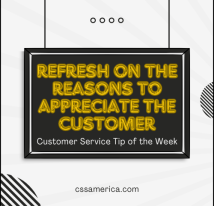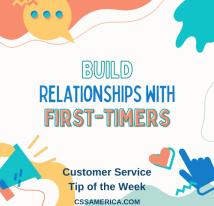I was reading a management book written by a former naval officer. He was given a leadership role over a ship that had been underperforming and had low morale. One thing he did to turn around the performance, to improve morale, was instill in everyone onboard the principle that we need to respect each other, regardless of rank.
For anybody who’s watched an old military movie where the personnel show respect for rank, often you hear the statements of “Yes, General” or “Sir! Yes, Sir” that we see exhibited by those with the more junior ranks.
But the Captain of this ship, the one trying to instill a new, high-performing culture, expected EVERYONE to be respectful of EVERYONE.
To understand “respect” in customer service, we have to paint a picture of it. For many people, it’s much easier to paint a picture of respectful behavior by describing disrespectful behavior so that people know what action NOT to take. Sometimes we literally define the word respect to paint that picture for those in customer service.
Communicating Respect to Rank
Today, let’s think about respect in terms of how it’s conveyed to people of rank – whether it’s an organizational leader or even the President. The words we use (Yes, Sir or Yes, Ma’am) are stated frequently in response to what the ranking person says. With individuals in those in high-rank roles, we try to understand their needs so that we can address them, carrying out their orders or requests. We listen as much as possible in that one encounter to minimize the need to meet with them again as well as to ensure we don’t take up any more of their time than is necessary.
Communicating Respect Regardless of Rank
These are all actions and behaviors we can do with each other – with co-workers and with customers. Use personal names and respectful terms to greet and address individuals throughout the conversation. Try to understand specifically what they’re saying by asking the right questions and spending the majority of our time listening. Allow them to speak first, and be patient through the conversation. Follow through on what we offered to do, trying to limit how much of their time is required, whenever possible.
Respect, Regardless of Rank – find ways to make respect an all-the-time thing.
Signup for FREE Tips! Contact Us More Resources for You Visit Our Home Page
























